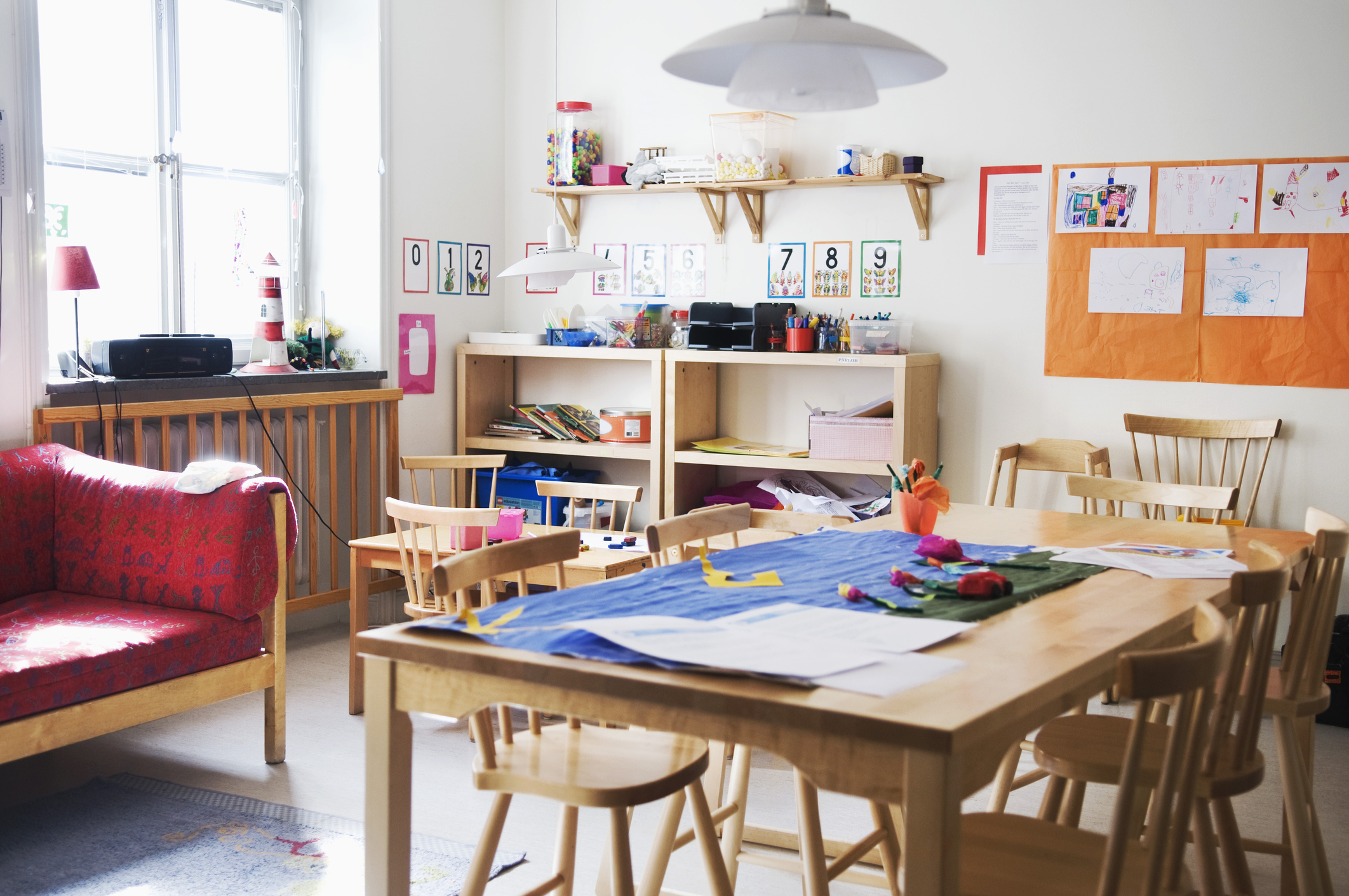Pre-K MIA
News Based on facts, either observed and verified directly by the reporter, or reported and verified from knowledgeable sources.
A post-pandemic shortage of childcare workers is having a ripple effect through Westchester families, their jobs, the childcare industry, and the economy.

Hey Examiner+ readers! Publisher Adam Stone here. Pleased to share with you this morning the latest important reporting from Examiner journalist Bailey Hosfelt. This type of story reminds me how lucky we are to have great local organizations advocating for children. But it’s frustrating to learn about the labor shortage for childcare. Read on and be in touch with feedback. Thanks as always!
Today is Friday, December 10, and you are reading today’s section of Examiner+, a digital newsmagazine serving Westchester, Putnam, and the surrounding Hudson Valley.
Need to subscribe — or upgrade your Examiner+ subscription to enjoy full access to all of our premium digital content? Details here.
Join now and take advantage of our special holiday rate of just $39 for a whole year:
Today’s Examiner+ is sponsored by Greca Mediterranean Kitchen+ Bar in White Plains.


For working mother Laura Holdgrafer, finding consistent childcare throughout the pandemic for her two children aged three and one has been quite the challenge.
“Childcare has been an absolute mess for us since the beginning of COVID,” Holdgrafer said, highlighting that a week before the world sheltered in place, she found out she was pregnant with her second child.
Originally hoping to hire an international au pair to come to live with the family and support their childcare needs, pandemic-based travel and visa restrictions prevented that from happening.
“We were scrambling because we were not looking to put our brand new baby into a daycare facility, knowing COVID was still bad,” Holdgrafer said.
Luckily, Holdgrafer’s sister, who was looking to leave her job and begin an online degree program, agreed to relocate from her Long Island home to the Holdgrafers to become their full-time nanny. This setup has provided a temporary solution for the family’s childcare needs. However, Holdgrafer says it’s not ideal long-term.
Given the climate, Holdgrafer’s youngest has not socialized with other babies around her age — something she would like to see change in the near future. But, despite actively searching for a childcare program for her youngest for four months, they cannot find anywhere that has an open spot.
“It is near impossible to get her into a program,” Holdgrafer said, sharing that she and her husband (who also works full-time) have been calling childcare providers and submitting applications to no avail. “We’re on every waitlist. We just keep striking out.”
While Holdgrafer said the situation is okay temporarily because they have alternative childcare secured, she would like her youngest to be in a consistent program. Currently, her three-year-old is in part-time preschool.
“If my sister was to leave, I have no idea what I would do with my younger daughter because there truly are no options that are viable for us right now,” Holdgrafer said. “The great resignation, combined with the lack of talent in these facilities, has created the perfect storm for the inability to gain proper coverage.”
A NATIONWIDE PROBLEM
Holdgrafer’s family is not alone in this experience. Nationwide, there is an unprecedented labor shortage in the childcare industry. According to the United States Department of Labor, the industry is down 126,700 workers — more than a 10 percent decline from pre-pandemic levels — nationally.
Its impact is being felt in the greater Westchester area, not only for working parents vying for a limited number of available spots but also for those trying to keep their businesses afloat.
Shira Leibowitz, CEO of Discovery Village, a childcare center and preschool in Tarrytown, said she currently has a waitlist of about 160 students. With a licensed capacity of 128 students, Leibowitz can only accommodate 85 children right now.
“Because we’re short-staffed, we’ve essentially had to freeze enrollment,” Leibowitz said. “Every so often, I can get one or two [children] in, but the waitlist keeps growing.”
Recently, Leibowitz had to close one classroom because she does not have enough staff to oversee it. Additionally, she had to change the center’s hours, closing an hour earlier than the usual six o’clock pickup, due to not having enough staff to cover the last shift — a decision that is extremely hard on working parents.
“It has been challenging to hire in a way that we have never before experienced,” Leibowitz said, speculating that the pay grade for childcare educators, as well an increase in remote work opportunities, may be causing a dearth of prospective employees.
Industry-wide, wages are horrifically low, sitting just above minimum wage. In order to offer a more competitive salary for Discovery Village staff (and hopefully attract more employees in the process) Leibowitz is raising tuition.
Personnel is the center’s largest expense, and, because the center is a for-profit and cannot fundraise, the only place that funding for salaries comes from is tuition. Many centers spend half or more of their budget on wages alone.
As of January 1, Discovery Village will raise its tuition by $220 a month. Prior to making this decision, they did a competitive cost analysis with other large centers in the area. They found that they are still the most affordable.
But even by raising tuition, Leibowitz worries it won’t be enough, especially when job seekers can find other positions outside the industry offering similar salaries with less responsibility.
And rising costs may put childcare, an expense many low- and middle-income families in Westchester already struggle with, further out of reach.

A SHORTAGE OF WORKERS, A SHORTAGE OF DOLLARS
Kathy Halas, Executive Director of Child Care Council of Westchester, works to connect parents with childcare and education options. Halas says that although the problems the industry is currently having are exacerbated by the pandemic, they are not new.
“The United States approach to childcare is really outdated and hasn’t worked well for a very long time,” Halas said. “The basic problem is that most parents cannot afford to pay what it really costs for a childcare business to provide care and education.”
The US spends 0.2 percent of its GDP on childcare for children under two — the lowest among developed nations. In Westchester, the average cost for a baby in a childcare center is over $21,000 per year. Many programs, Halas said, charge upwards of $26,000.
To afford infant care, a parent or family has to be making a pretty high salary. If a Westchester family has two children, they need to earmark $55,000 to $60,000 a year — a price point most cannot afford after factoring in all other living expenses.
As a result, many childcare business owners have depressed wages in order to keep costs low enough. In doing so, they hope they can remain affordable compared to their competitors and see high enrollment as a result.
However, Halas said this approach has backfired — especially for retaining childcare educators, many of whom have bachelor’s and master’s degrees, despite making minimum wage (or just above it). Now, there are vacancies all across the field.
“You’re perpetuating this detrimental and disrespectful wage structure for people in the industry,” Halas said. “The whole model doesn’t work, and it has absolutely crashed and burned.”
Today’s supporting sponsors are the Town of Yorktown…

…and the Peekskill Business Improvement District.

In Westchester, public kindergarten teachers have a starting salary of around $60,000. Many childcare center directors won’t ever make that amount in their careers. Early education teaching staff makes roughly half of that figure, and, Halas highlighted, there is no comparability between K through 12 and early childhood educators when it comes to benefits.
Most people working in early education have access to some kind of healthcare. However, retirement plans are unusual. Increasing salaries to be more equitable, while at the same time ensuring families can afford childcare, is a delicate dance.
Carmelina Myers, Director of Educational Programs at Country Childrens Center, which has locations in Bedford Hills, South Salem, Ossining, Yorktown Heights, and Katonah, said these two considerations absolutely go hand in hand.
“We need the enrollment to support the teachers, and if we don’t have the enrollment, then we’re left with teachers that are making low wages,” Myers said.
Right now, Country Childrens Center is experiencing similar staffing issues to Discovery Village. Myers, who oversees much of the hiring, said that before COVID, a job posting for a pre-K teacher would easily get 15 to 20 resumes. Now, the most Myers has received in the past year for one is five resumes.
“It leaves us going, ‘What happened? Where is everyone?’” Myers said.
Halas has discussed these challenges with childcare providers, including what it would realistically take to improve wages.
“I spoke to a center that’s currently paying their headteachers $14 or $15 [an hour] and their charge for a baby is $25,000 a year,” Halas said. “If you started to pay that same teacher $26 an hour, which is a low to mid-50,000 [salary], that $25,000 cost goes up to $33,000. That gap, in my judgment, has to be filled by public dollars.”
In New York, there is a childcare subsidy program through the state Office of Children and Family Services, however, Halas said, the eligibility criteria are not meeting the reality of many families’ needs.
“Frankly, you’d still have a hard time with childcare for two kids if your [family] income was $100,000 in Westchester.” — Kathy Halas
“The financial [criteria] is that your gross annual income cannot exceed 200 percent of the federal poverty level,” Halas said. “So what does that translate to for a single parent with one child? It’s $34,840.”
Earlier this year, United Way released the Asset Limited, Income Constrained, Employed (ALICE) Report, where they looked at how much income it takes for families to be able to handle their expenses, including housing, childcare costs, and basic bills, without help. The report concluded that a family of four needed to have an annual income of 400 percent of the federal poverty level — roughly $100,000 — in order to pay for these costs without assistance.
“Frankly, you’d still have a hard time with childcare for two kids if your [family] income was $100,000 in Westchester,” Halas said.
Keeping in mind the aforementioned subsidy cap of 200 percent, if a family of four with two working parents makes a combined income of over $53,000, they make too much money to receive any government assistance for childcare in New York.
“If parents can’t afford childcare and we don’t have that enrollment, it’s going to make it hard to pay and support the teachers,” Myers said.
This results in low wages, high turnover among staff, and disruptions to the classroom environment.
“Children need routine, so when you have a high turnover, you’re going to end up with an environment that’s constantly changing,” Myers said, highlighting that this is not good for any child, especially in an early education setting.
Some early education workers may choose to leave the industry altogether.
“If we as a community want to provide high-quality childcare that promotes early learning and meets the needs of each and every child, we need to make it affordable for all families,” Myers said.
In order to truly deliver for families, Halas believes the state has to make a big step toward meeting what the United States Office of Child Care (OCC) says, which is that no family should pay more than seven percent of its gross income for childcare.
“That means we have to make childcare financial assistance available to many, many more families than are currently eligible,” Halas said.
A HELPING HAND
In April Congressman Mondaire Jones (D-17) introduced The Universal Child Care and Early Learning Act with Senator Elizabeth Warren, which would establish affordable and high-quality universal childcare options for families. A number of those provisions, Jones said, have found their way into the Build Back Better Act, which recently passed in the House of Representatives.
“One of the things that I’m most proud of in that legislation is that it would pay all childcare workers similarly situated to public school teachers,” Jones said at a Nov. 23 press conference on Build Back Better’s key victories for the county.
Included in the bill are provisions for affordable childcare, universal preschool, and an expanded child tax credit.
“I’m proud to report that in Build Back Better, we are paying childcare workers a competitive wage, and that is the least we can do,” Jones said.
Jones also underscored that it’s imperative to make sure the industry is an attractive profession for people to enter, as well as ensuring that families do not live in a childcare desert.
If Build Back Better is to pass in the Senate, low- and middle-income families making under a certain threshold would be able to receive generous federal subsidies to help them purchase child care at licensed providers. Under the bill, families in New York making under $250,000 would not pay more than seven percent of their household income on childcare — the target set forth by the OCC.
“Of the things that are still being debated, childcare is not really on the chopping block,” Jones said. “I think it speaks to all the work that people like myself did to get us to this point.”
In Westchester, County Executive George Latimer said $5.6 million additional dollars in the current proposed county budget have gone to childcare, thanks to federal dollars the county received earlier this year through the American Rescue Plan Act.
This funding, Latimer said, will allow childcare providers to adjust educators’ salaries to a more livable wage. In 2020, the County Board of Legislators reached an agreement to reduce the parental contribution for childcare among income-eligible families from 25 percent to 23.
“That may not seem like much, but in a household budget, that’s less money you have to pay for childcare,” Latimer said.
Latimer highlighted that while there are still concerns related to the childcare industry in Westchester, already allocated funds — and hopefully more economic support from President Biden’s ambitious bill — will help families.
For now, leaders in the industry are trying their best to stay optimistic.
“I’m certainly hopeful for the support coming on a county, state, and federal level,” Leibowitz said. “There’s only so much we can do alone.”
Bailey Hosfelt is a full-time reporter at Examiner Media, with a special interest in LGBTQ+ issues and the environment. Originally from Connecticut and raised in West Virginia, the maternal side of their family has roots in Rye. Prior to Examiner, Bailey contributed to City Limits, where they wrote about healthcare and climate change. Bailey graduated from Fordham University with a bachelor’s in journalism and currently resides in Brooklyn with their girlfriend and two cats, Lieutenant Governor and Hilma. When they’re not reporting, Bailey can be found picking up free books off the street, shooting film photography, and scouring neighborhood thrift stores for the next best find. You can follow Bailey on Twitter at @baileyhosfelt.
We hope you’ve enjoyed today’s section of Examiner+. What did you think? We love honest feedback. Tell us: examinerplus@theexaminernews.com

Examiner Media – Keeping you informed with professionally-reported local news, features, and sports coverage.
